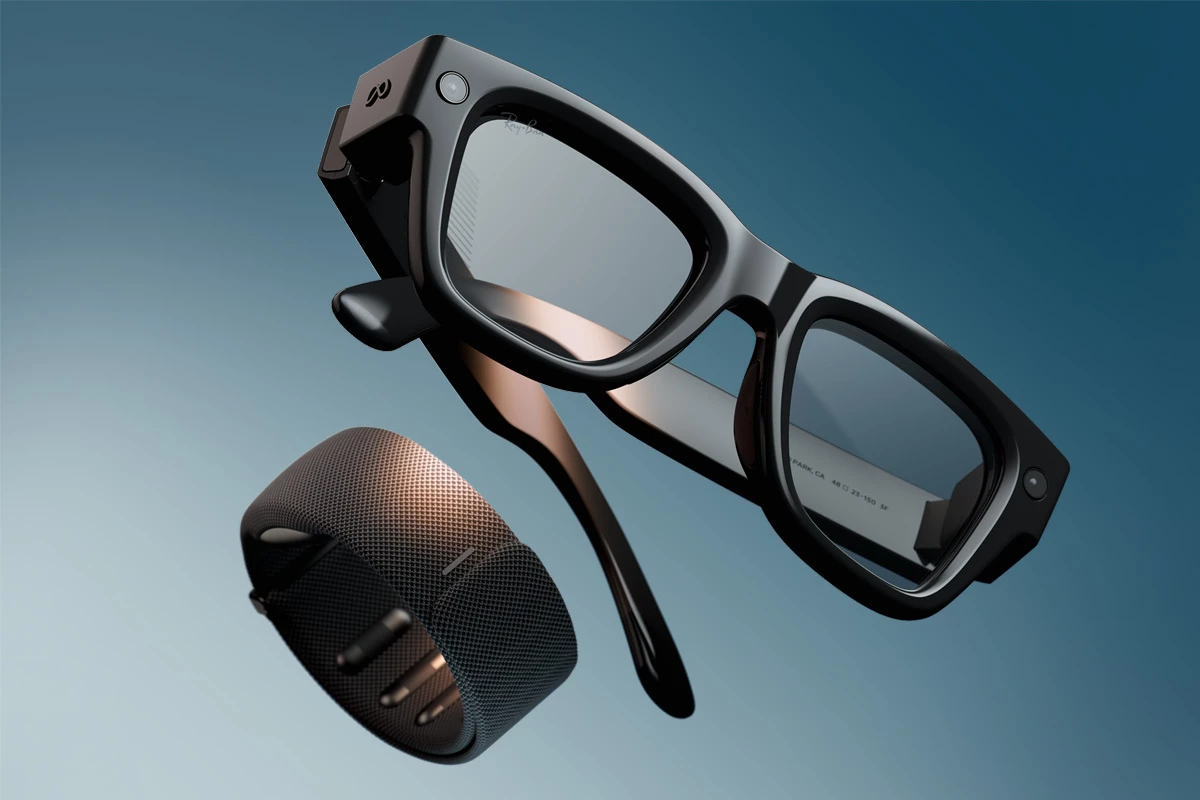How Meta Ray-Ban Display Glasses and Neural Band Technology Aim to Replace Smartphones
Meta CEO Mark Zuckerberg has unveiled the company’s most ambitious wearable device yet: the Meta Ray-Ban Display glasses, designed to potentially replace smartphones and reduce our dependence on handheld screens. The $799 Meta Ray-Ban Display glasses represent the company’s first consumer-ready glasses with a built-in display, available for purchase starting September 30.
The Vision Behind Smart Glasses
At the Meta Connect 2025 conference, Zuckerberg shared his perspective on our relationship with technology. He believes people have become too absorbed in their phone screens and that smart glasses offer an opportunity to reconnect with real life while still accessing digital tools.
The next-generation artificial intelligence-powered wearable device features a pair of smart glasses with a tiny display inside the lens. This design allows users to access information and interact with digital content without constantly looking down at a screen.
Revolutionary Neural Band Technology
The Meta Ray-Ban Display comes paired with the Meta Neural Band, representing an exciting evolution in AI glasses technology. The Neural Band uses electromyography (EMG) to detect brain-to-hand signals for subtle hand gestures, allowing users to scroll apps or select items without touching a screen, and it’s water-resistant.
This innovative wristband enables users to type text messages by simply moving their fingers as if holding a pen. The system translates these finger movements into digital text, creating a seamless writing experience. According to Zuckerberg, users can type approximately 30 words per minute using this method, which compares favorably to the 36 words per minute typically achieved on touchscreen smartphones.
Advanced Features and Capabilities
The Ray-Ban Display glasses include cameras, audio functionality, and a translucent heads-up display that shows and allows users to respond to text chats, AI prompts, directions, and video calls using gesture interactions.
The glasses integrate popular Meta applications including Instagram, WhatsApp, and Facebook. Users can access these platforms, search for directions, and utilize live translation features directly through the display. The device also includes an AI assistant, cameras, speakers, and microphones for comprehensive functionality.
The technology enables users to quickly and quietly respond to texts in movie theaters or see directions to nearby coffee shops without looking down at their phones. This hands-free approach represents a significant shift in how we might interact with digital content in the future.
Market Competition and Industry Trends
Meta isn’t alone in pursuing smartphone alternatives. The company continues developing experimental smart glasses to support research into AI, robotics, and machine perception as part of Zuckerberg’s vision for the next major computing platform. Apple and Google are also preparing for a future where smart glasses might replace smartphones.
The competition reflects industry recognition that wearable technology could represent the next major evolution in personal computing. Companies are investing heavily in developing glasses that combine functionality with fashionable design.
Technical Challenges and Real-World Testing
Despite the promising technology, the glasses face practical challenges. During the Meta Connect 2025 demonstration, the device failed to receive a phone call, highlighting that the technology still requires refinement. Such technical hiccups are common in emerging technologies and typically improve through continued development.
The integration of multiple technologies – displays, cameras, AI processing, and gesture recognition – creates complex engineering challenges. Battery life, processing power, and heat management remain ongoing concerns for wearable devices.
Future Vision and Mass Adoption
Zuckerberg envisions a future where AI-powered smart glasses become as common as smartphones today. He predicts that various price points and different technologies will make smart glasses accessible to millions or billions of users worldwide.
The Meta CEO aims to develop glasses capable of enabling holographic displays, expanding the possibilities for augmented reality experiences. Such technology could transform how we work, learn, communicate, and entertain ourselves.
Privacy and Social Implications
The widespread adoption of camera-equipped smart glasses raises important privacy considerations. Users and bystanders must navigate new social norms around recording capabilities and data collection. Meta’s history with user data adds another layer of complexity to privacy discussions.
The technology’s success will likely depend on addressing these concerns while delivering compelling user experiences. Clear guidelines and robust privacy protections will be essential for widespread acceptance.
Timeline for Smartphone Replacement
Whether smart glasses will truly replace smartphones remains uncertain. The transition would require significant improvements in battery life, processing power, display quality, and user interface design. Consumer acceptance of wearing technology on their faces also presents a considerable hurdle.
However, the rapid advancement in AI capabilities, miniaturization of components, and growing interest in hands-free computing suggest that smart glasses could play an increasingly important role in our digital lives. The success of Meta’s Ray-Ban Display glasses could accelerate this transition and influence how other companies approach wearable technology development.







